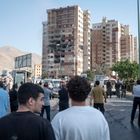1 min
10th Anniversary of the Supreme Court Legalizing Gay Marriage
The 10th anniversary of the U.S. Supreme Court’s landmark decision in Obergefell v. Hodges marks a decade since same-sex marriage became legal nationwide—a pivotal moment in the advancement of LGBTQ+ rights and civil liberties. This anniversary is newsworthy not only because of the social and legal progress it symbolizes but also due to ongoing conversations around equality, representation, and protection under the law. As the political landscape shifts and new challenges emerge, revisiting the legacy of this decision offers an opportunity to reflect on progress, examine setbacks, and spotlight the voices shaping the next chapter in LGBTQ+ advocacy. Key story angles that may interest a broad audience include: Personal stories from couples and families: Exploring how the decision transformed lives and created new definitions of family, love, and legal recognition. The legal legacy of Obergefell v. Hodges: Analyzing the impact on subsequent LGBTQ+ rights cases and how the precedent continues to be tested in courts. Backlash and resistance: Investigating the rise of anti-LGBTQ+ legislation and rhetoric in the decade following the ruling. Intersectionality within the LGBTQ+ rights movement: Highlighting the experiences of LGBTQ+ people of color, transgender individuals, and rural communities. The global ripple effect: Examining how the U.S. ruling influenced marriage equality movements in other countries. The future of LGBTQ+ rights: Discussing what comes next in the fight for inclusive healthcare, anti-discrimination laws, and gender identity recognition. Connect with our experts about the 10th Anniversary of the Supreme Court Legalizing Gay Marriage: Check out our experts here : www.expertfile.com





